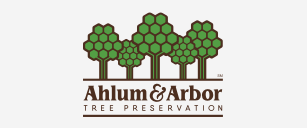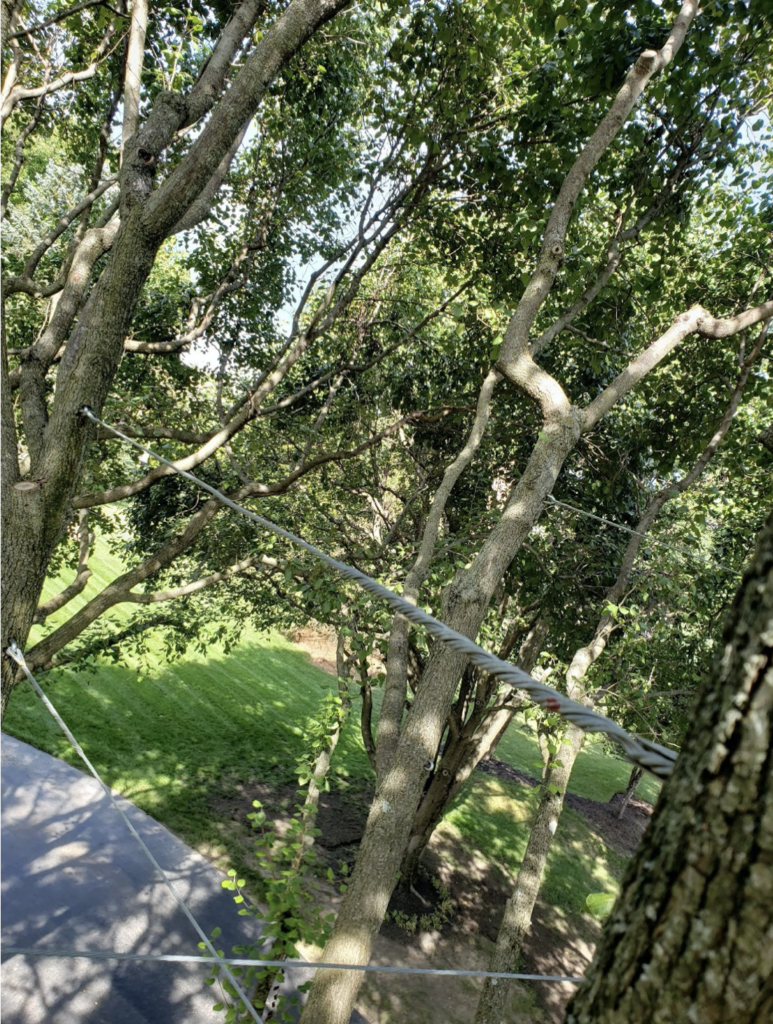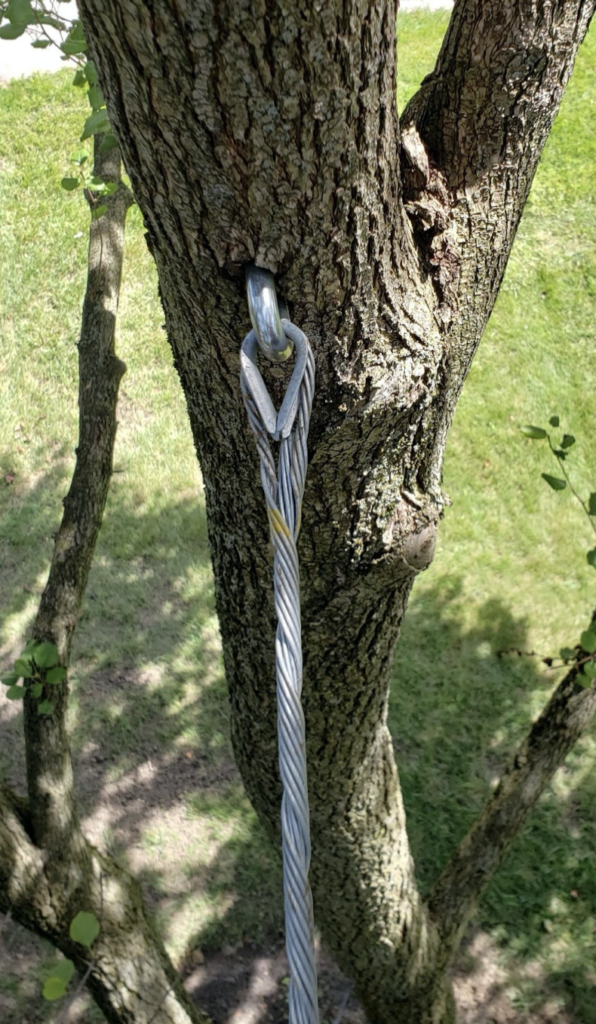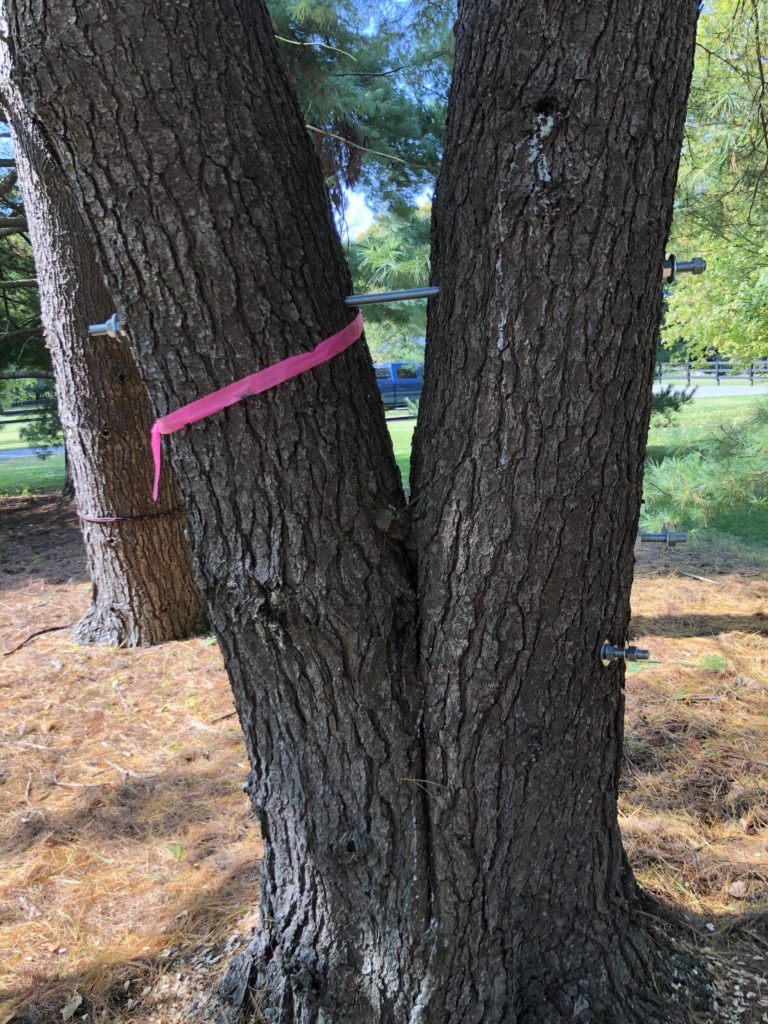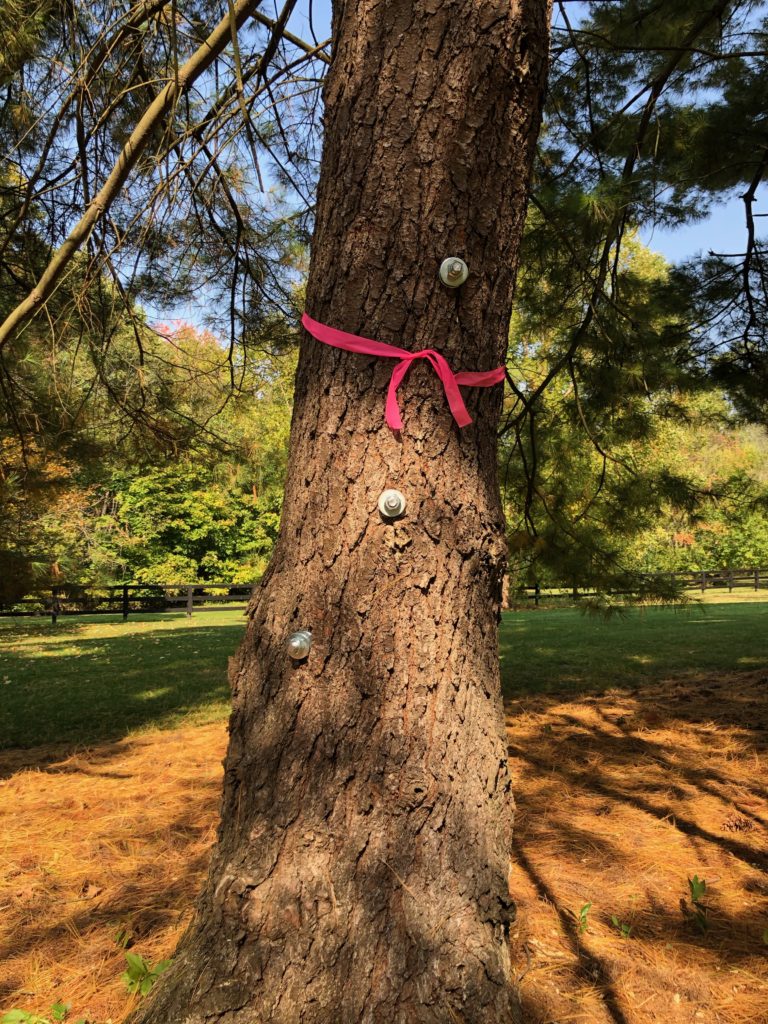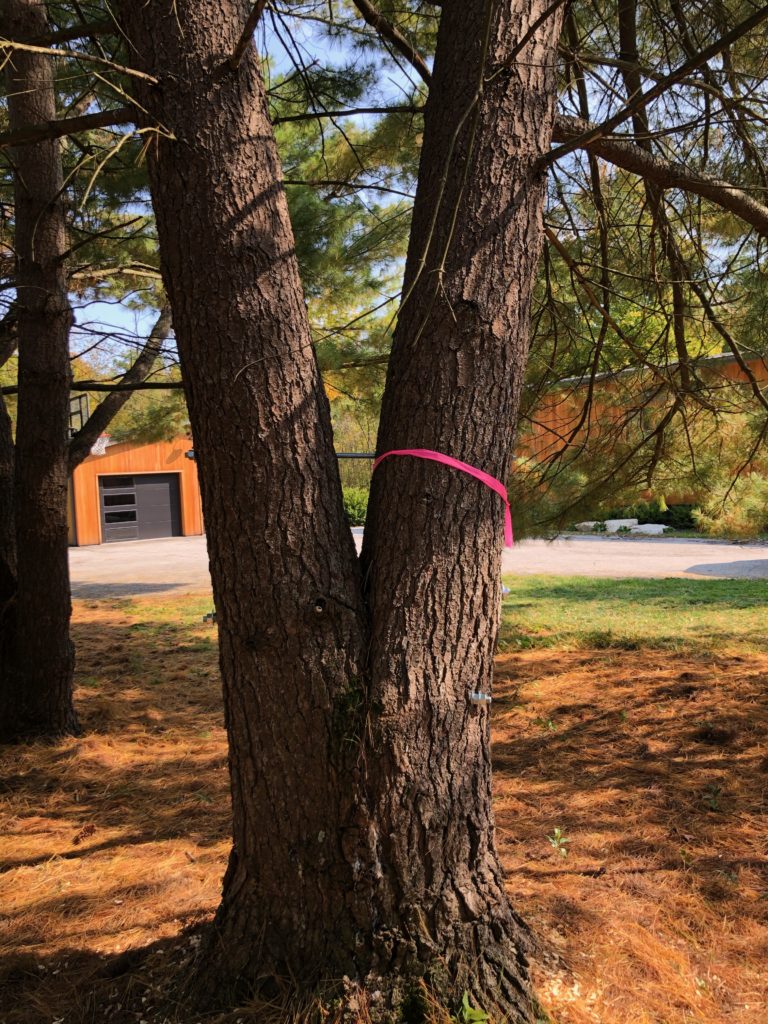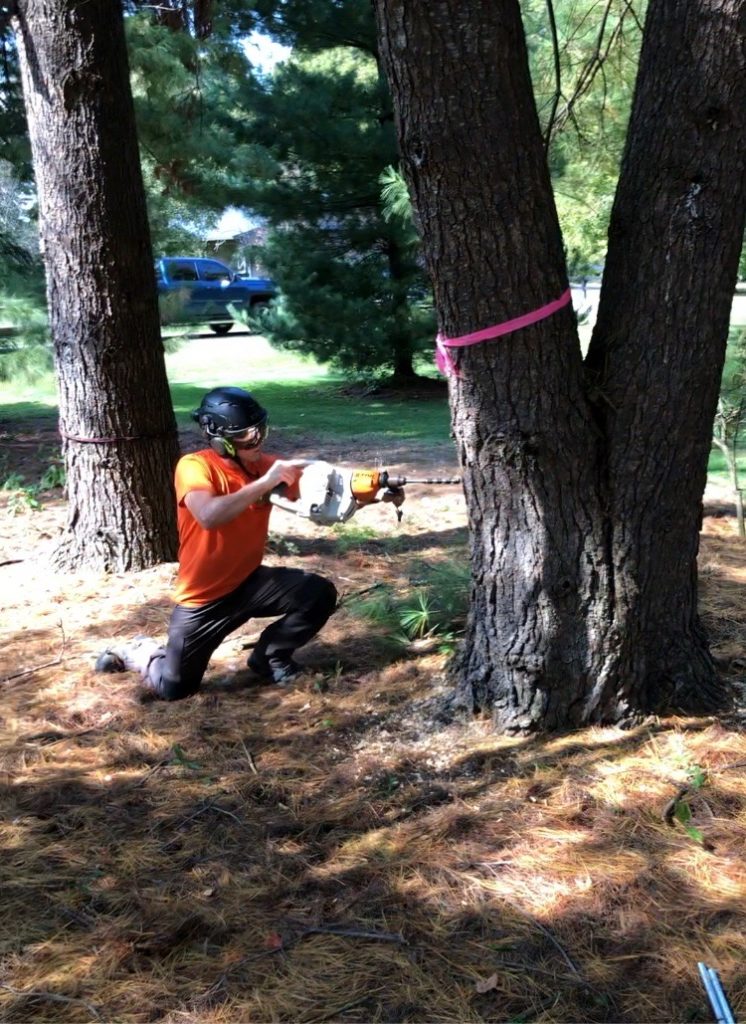Help your trees keep themselves together.
On the surface it may appear that trees are holding it together, but sometimes they need a little extra support.
Trees with weak branch unions due to cracks, decay, growth habits, or previous damage from weather events, may be candidates for additional mechanical support from high tension cables and/or threaded brace rods. These hardware systems are designed to hold the tree together to prevent it from separating at these weakened unions.
Extra High Strength Cables
Extra High Strength (EHS) cables are high tensile strength cables used to connect two opposing limbs of a branch union, providing reduced stress and additional support. EHS cables are typically installed at a height of two thirds the distance between the branch tips and the union to be supported, making them sometimes difficult to see after installation.
When installing a cable, lag hooks are screwed into both branches of the union to be supported. A cable grip is then used to connect the cable to the lag hook, after adequate tension has been applied using a come-a-long device.
After installation, cable systems remain in the tree semi-permanently. As branches grow longer, they also grow in diameter, meaning that the lag hook may eventually be covered up by the bark. It is at this point that they should be replaced, likely at a higher position in the canopy to compensate for added height since the initial installation. This service is performed by our crews on all shapes and sizes of trees, which is why a variety of cable and lag diameters are available.
Brace Rods
Brace rods are threaded steel rods that are used to support weak branch unions by passing through them, instead of supporting them from above as cables do. This is accomplished by drilling through the branch union with a large diameter drill bit, and tightening from both ends using heavy duty nuts and washers.
Typically, brace rods are installed in sets of three- one above the union, one below, and one through the center.
After installation, brace rods remain in the tree indefinitely and cannot be removed, the tree simply grows around and over them. Most often, if brace rods are being installed, cables are being installed to support the branch union as well. As with EHS cables, brace rods come in a variety of diameters and lengths to suit the size of the tree or branch union.
How do I know if my tree is in need of these services?
If your tree has visible vertical cracks below branch unions, areas of decay, or long arching branches, these could be signs that cabling and bracing are needed. Long, heavy branches coupled with snow, ice, heavy wind, or even a bumper crop of fruit/nuts can be a recipe for disaster if neglected. Supporting large branches over roofs or parking areas also offers a little extra peace of mind during unforeseen weather events.
The best way to know if your tree could benefit from our cabling or brace rod services is to schedule an appointment with one of our many ISA Certified Arborists, who can walk you through the best course of action for the health and safety of your trees.
